An Opinionated Guide to NYC
Genda Lin
ABSTRACT
“An Opinionated Guide to NYC” is a design project about language, collective memory, and sentiment in public space. By exploring a dataset of nearly 40,000 Google Reviews across New York City and the potential of machine learning, the project offers a new way to read maps and understand the city—while also reflecting on how language, spatial experience, and mobility shape both possibilities and limitations.
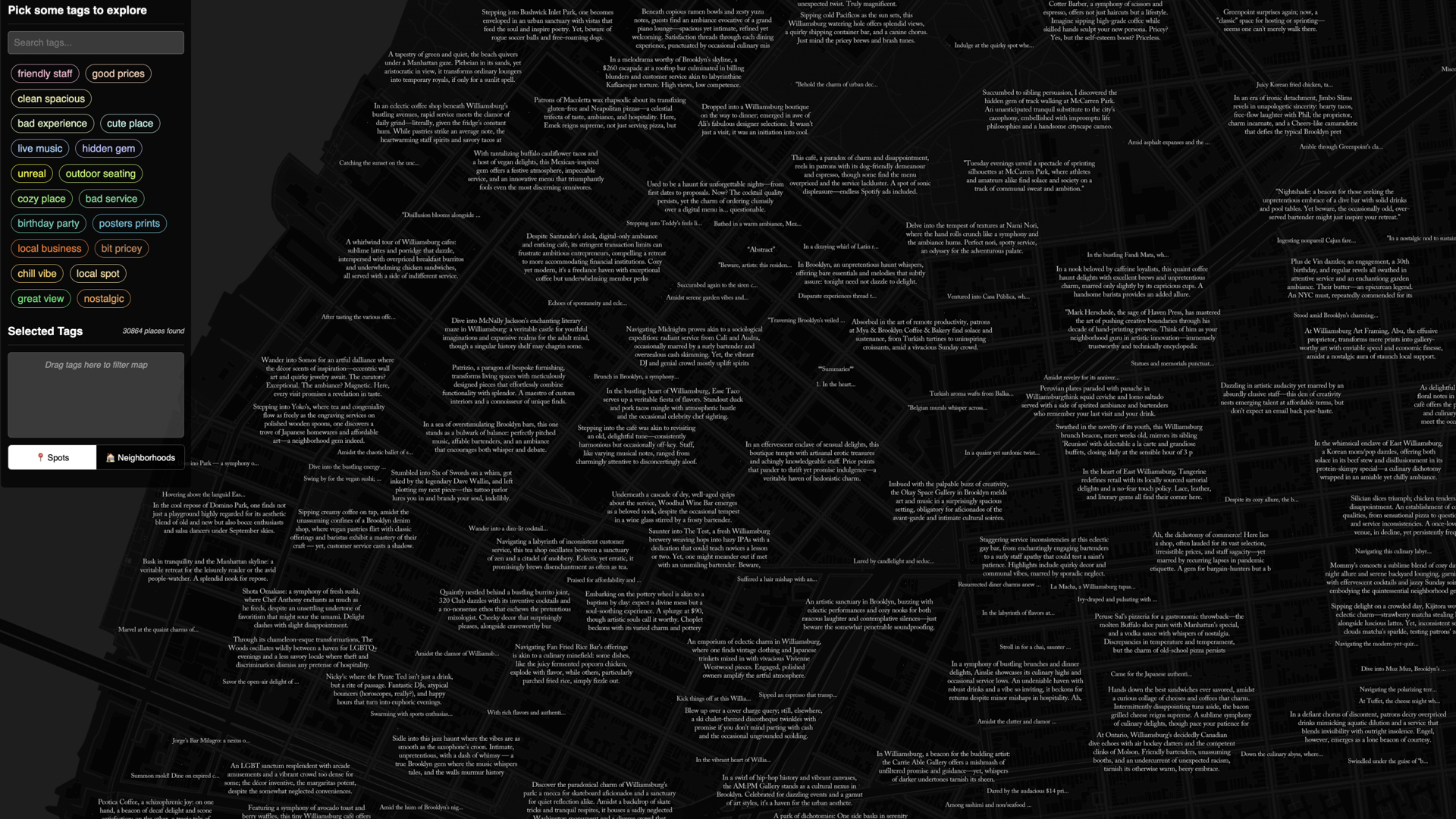
MOTIVATION
Traditional navigation systems are built around efficiency—type a destination, get a route. But I felt something was missing, the ritual of discovering and curiosity. Cities aren’t just networks of streets and services; they’re layered with emotion, memory, and meaning. So I asked: What if we could navigate the city like reading sentences, paragraphs, books? This project began with that question. I drew inspiration from psychogeography and the Situationist idea of the dérive — drifting through space guided by feeling rather than function. Instead of flattening urban experience into utility, I wanted to create a system that invites wandering, guided by language, atmosphere, and emotional resonance with more local and unseen view of urban environment. The goal was to reframe the city as a space of collective memory and imagination, not just mobility. This project is, in many ways, a tribute to my love for New York City.

HYPOTHESIS
With the advancement of intelligent agents and the growing availability of spatial data, future urban mobility and navigation may be shaped less by fixed coordinates and more by contextual semantics and emotional cues.
Maps based on language, vocabulary, and affective context can offer more open-ended and meaningful ways of navigating cities—challenging the dominant logic of distance, location, and popularity that often reflects capitalist spatial structures.

Design Question
Can we distill each place in NYC into a quote and tags shaped by voices, emotions, and memories, revealing local insights and biases?

METHODOLOGY
I collected data from 35,000 places in NYC, pulling 30 Google Reviews for each. Using natural language processing, I generated literary-style quotes, clustered key phrases, and built a 262-tag semantic system. Each quote is a semantic distillation of real reviews, reflecting the strongest collective emotions and memories of a place. They may be biased, incomplete, or playful—just like language itself—offering a more human, narrative way to experience and navigate the city.
One of my favorite stories came from a theater in Queens that had only recently closed. The quote generated was: “A beloved neighborhood cinema lost to time, Multiplex was where generations gathered for cheap tickets, spilled sodas, and first movie memories. Now closed, it lives on in nostalgia, teary-eyed goodbyes, and the eternal hope of a comeback.”
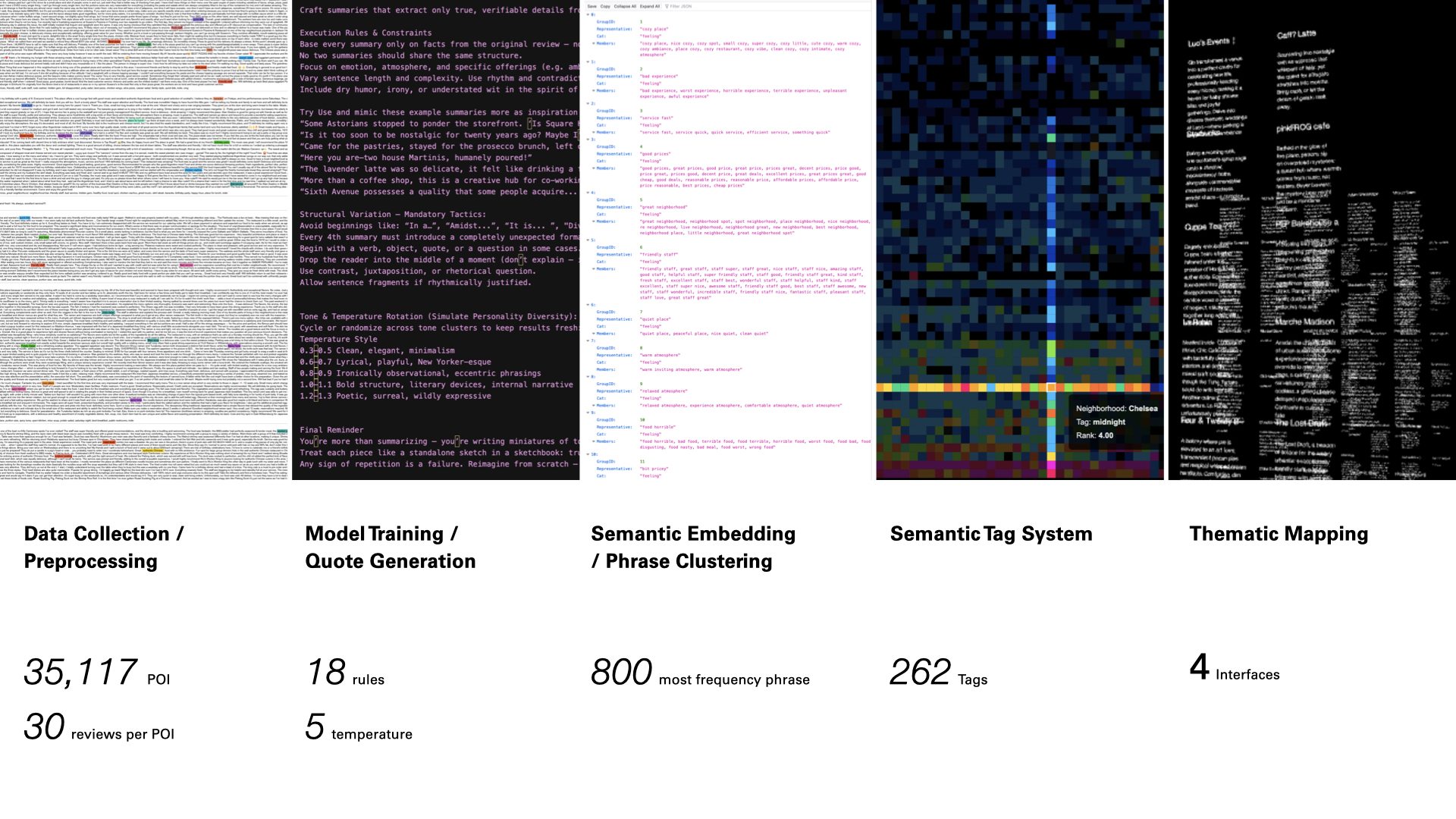
SOLUTION
The project consist of four interface to communicate insights with people.
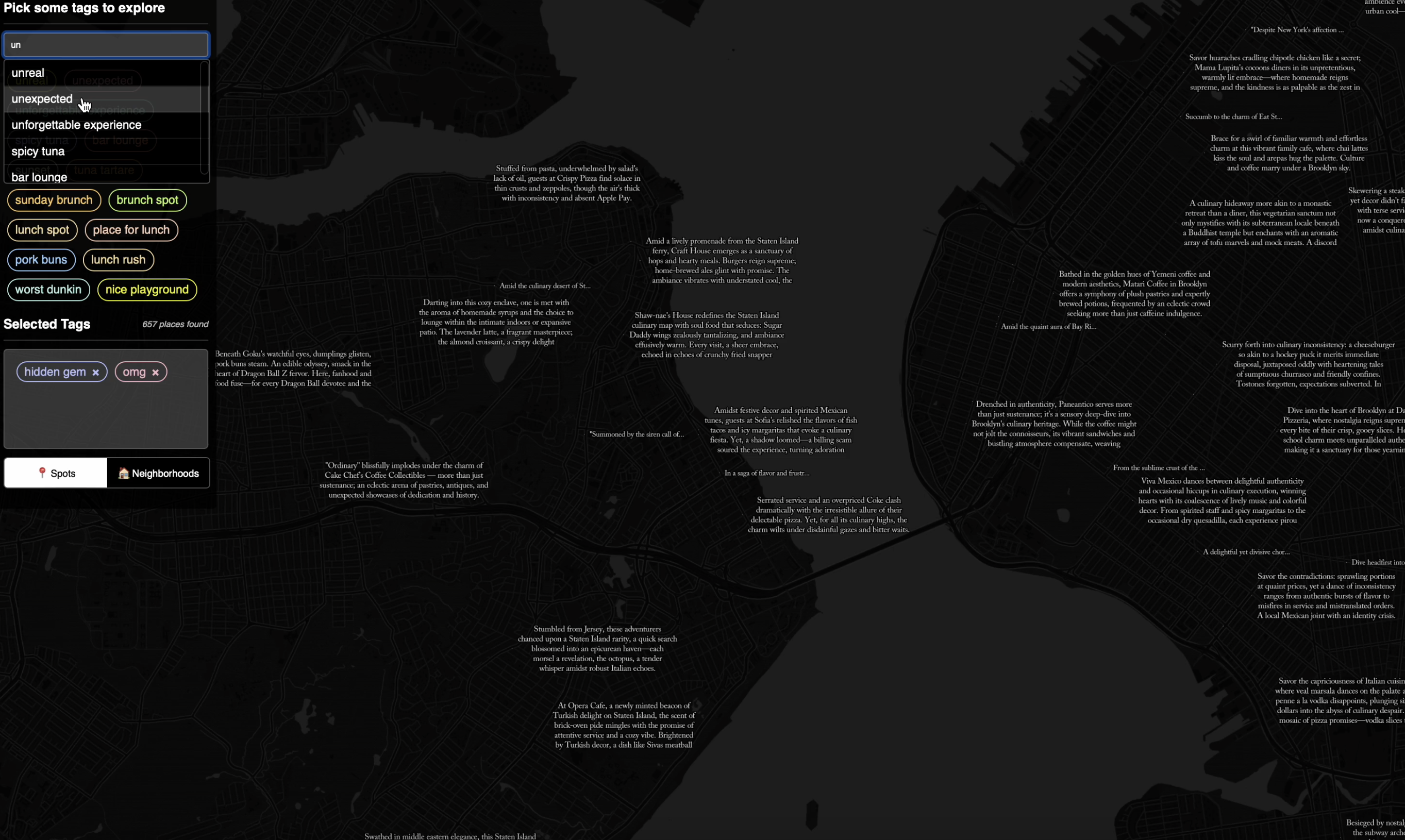

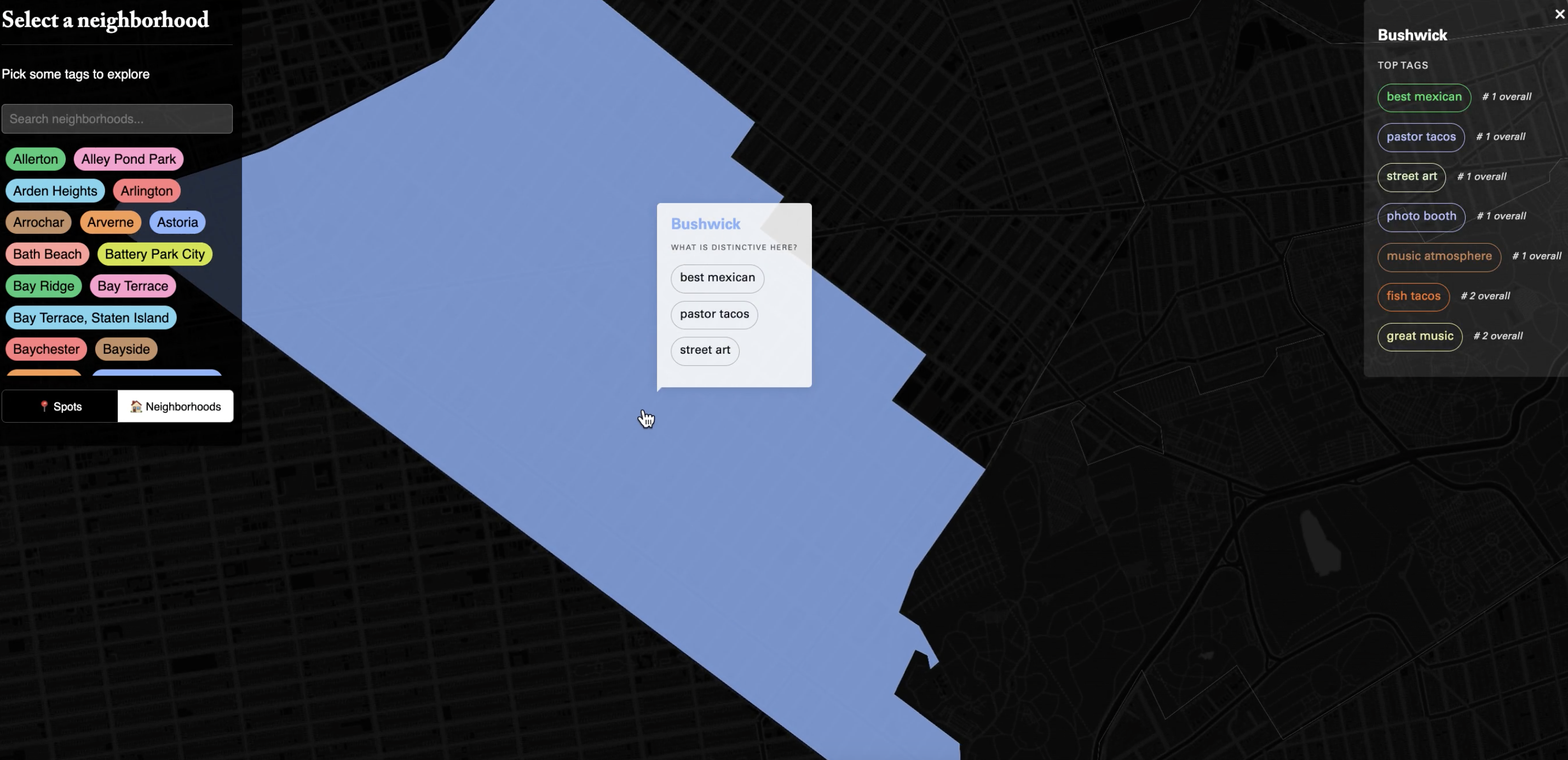
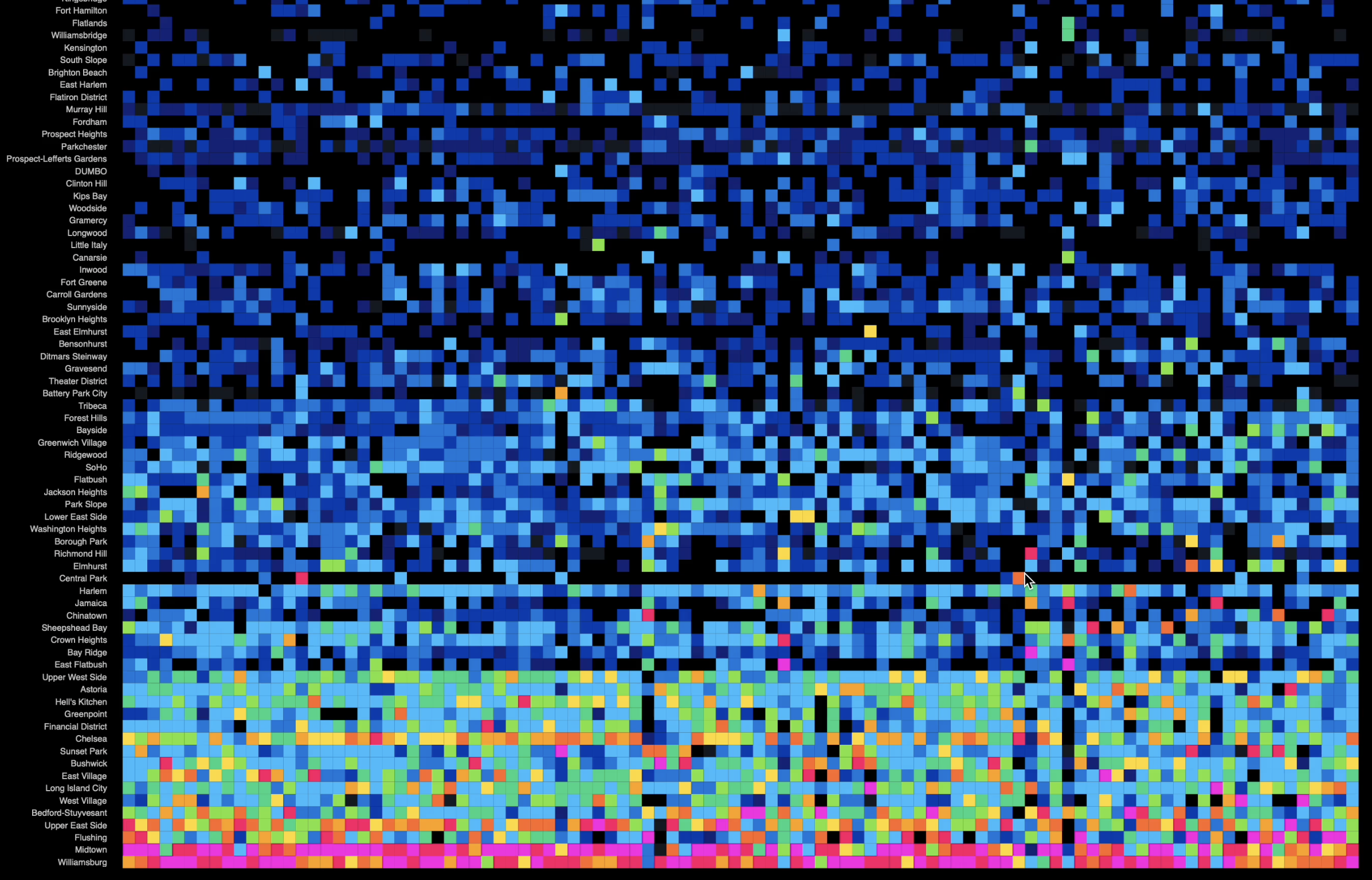

VISION
“An Opinionated Guide to NYC” proposes an alternative to function-first, optimization-driven systems. It’s about seeing the city as a mosaic of stories rather than a grid of destinations.
In a time when digital tools increasingly shape how we move and choose, I believe there’s room for maps that are also poetic and language-driven. That hold space for ambiguity, curiosity, and subjective truth. This project is both a critique and a proposal: it challenges dominant paradigms of urban data, and offers a conversational, emotionally intelligent interface in return.
BIBLIOGRAPHY
ACKNOWLEDGE
Special thanks to my advisor Jia Zhang, instructors in colloquium: Catherine Griffiths, Seth Thompson, Laura Kurgan, Snoweria Zhang, Violet Whitney, William Martin. Brilliant faculty in CDP: Josh Begley, Dare Brawley, Mario Giampieri, Meli Harvey, Celeste Layne, Daniel Nagy, James Piacentini, Jonathan Stiles, Dan Tae Young, Anthony Vanky, Adam Vosburgh, Luc Wilson. Designer and researcher friends who provide their valuable ideas : Hao Che Hung, Zoe Lin, Dan Miller, Cathy Tung. And all my CDP peers with your inspiration and generosity.